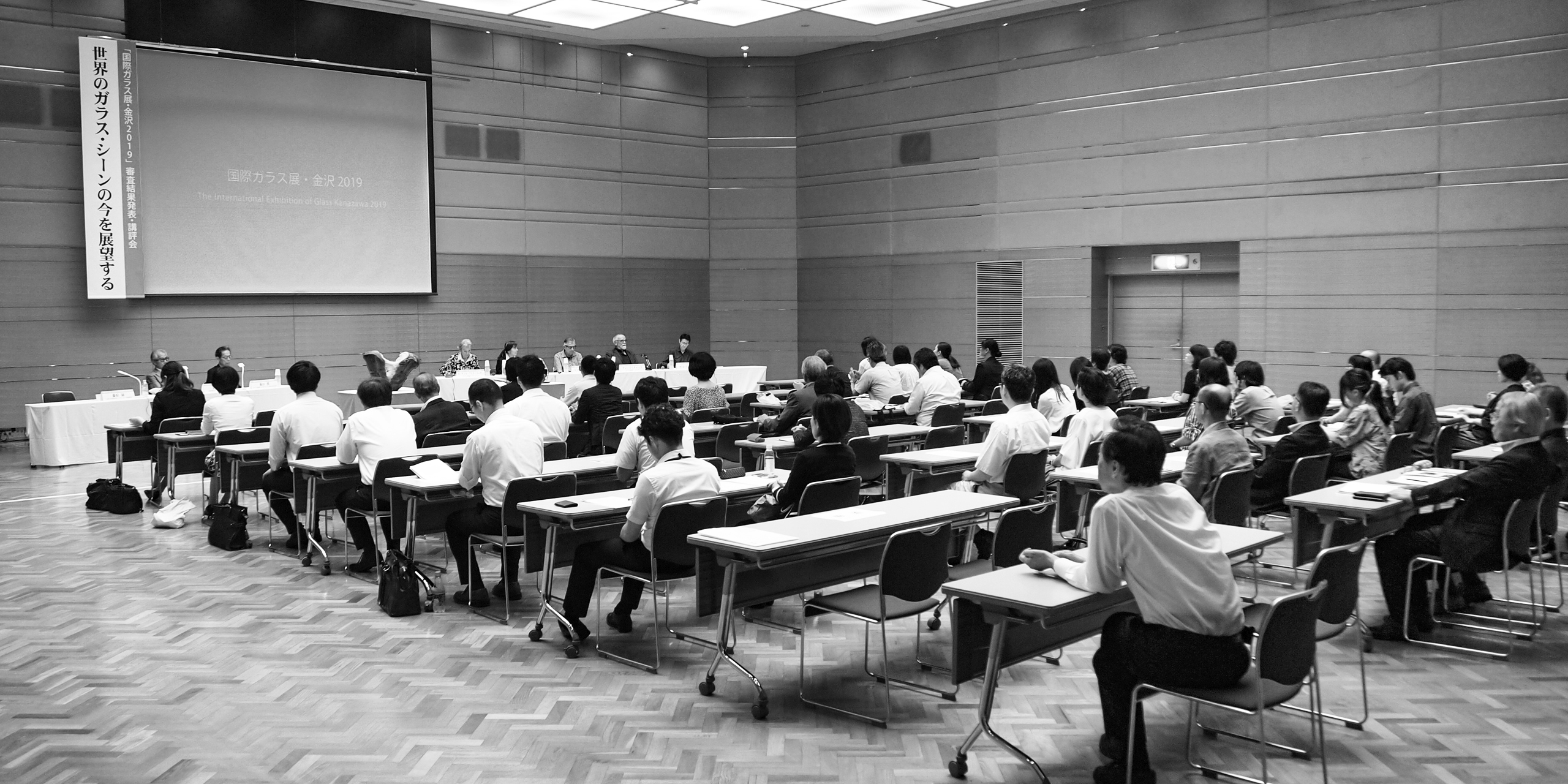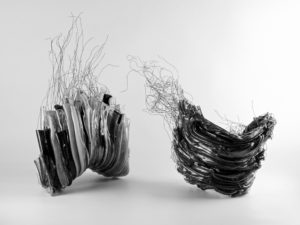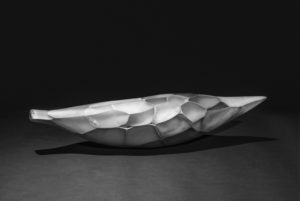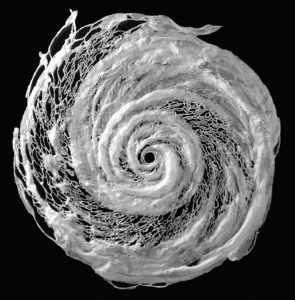Panel Discussion

Comments on the Honorable Mention winners(1/2)

Reach
H32×W24×D14
H28×W22×D16
2019
WIETH, Ida (Denmark)
TAKEDA ───── Thank you. I would like to move to the Honorable Mention winners. First, Fujita, please comment on the work by Ida Wieth. The two parts are side by side. They are almost the same size, 32cm high, 24cm wide, and 14cm thick.
FUJITA ───── Those who visited the exhibition three years ago may remember Ida Wieth, and artist from Denmark whose work of the same series was awarded the Silver Prize in 2016. The previous work had more powerful vertical lines and it looked like an arrangement of tree branches. This time, she changed the form by folding the previous work in half and making the copper wires’ movement more conspicuous. According to the information on her techniques, it says blown, fused, and slumped. So, I imagine that she makes branch-like glass tubes by blowing them one by one to bundle them and bend them in the electric kiln, In the case of the previous work, the wires are not so conspicuous. This time by using a lot of wires, she forms streams. In this way she emphasizes a feeling of vitality as well as a sense of energy. The wire component gives a powerful visual impact.
I have commented on this work by comparing it with her previous work. However, I feel empathy with her efforts to make progress from her earlier works by continuing her trials. One of the jurors of the panel is Ms Laursen from Denmark. Yesterday I asked her about Ida Wieth, and she told me that Wieth studied the knots of Japanese cloth and cords in Japan, which has stimulated her glass art.

光と色の表出
Representation of Light and Color
H13×W62×D16
2018
若色 正太
WAKAIRO, Shota (Japan)
TAKEDA ───── The next Honorable Mention goes to Shota Wakairo’s work. It is 13cm high, 62cm long, and 16cm wide. I would like Mr. Zoritchak to comment on the work.
ZORITCHAK ───── This work is beautiful in form. While looking at the work, you can feel human nature or even human fate. This work consists of many parts. This form is completed by melting other parts. The combination is performed by means of perfect fusion as well as incomplete fusion, which is interesting.
Out of this work, I imagine that a Japanese fisherman went to the beach with many fishing tools. While on his way, and while fishing, he dropped various things here and there, scattered them around and left them behind. As a whole there is something soft and beautiful about this work. In principle, you cannot touch the works at the exhibition. Yet I would like to invite you to touch this work. When I touch it, the surface feels soft and smooth like a baby’s skin. When this work is displayed at the exhibition, please come and have a look at it in person.

Vortex
H105×W105×D6
2018
石見 麻衣子
ISHIMI, Maiko (Japan)
TAKEDA ───── Next, the Honorable Mention winner is by a Japanese artist, Maiko Ishimi. It is glass set on a black ground. It is 105cm high and wide and 6cm thick. It is a big but thin work. We would like Mr. Zoritchak to comment on this work.
ZORITCHAK ───── For every type of human behavior and creation, including production activities, various powers operate at the same time. This happens in our everyday lives. The work here is like the beginning of life. It has a sense of speed and movement, an enormous dynamism. The center looks like a black hole, into which everything disappears. Around the black hole, however, various things are moving. My interpretation is that although many things disappear, at the same time something new appears. If something new is created, a new life or a new being is born. I think this work is excellent as a expression of dynamism and movement of time. Thank you.
